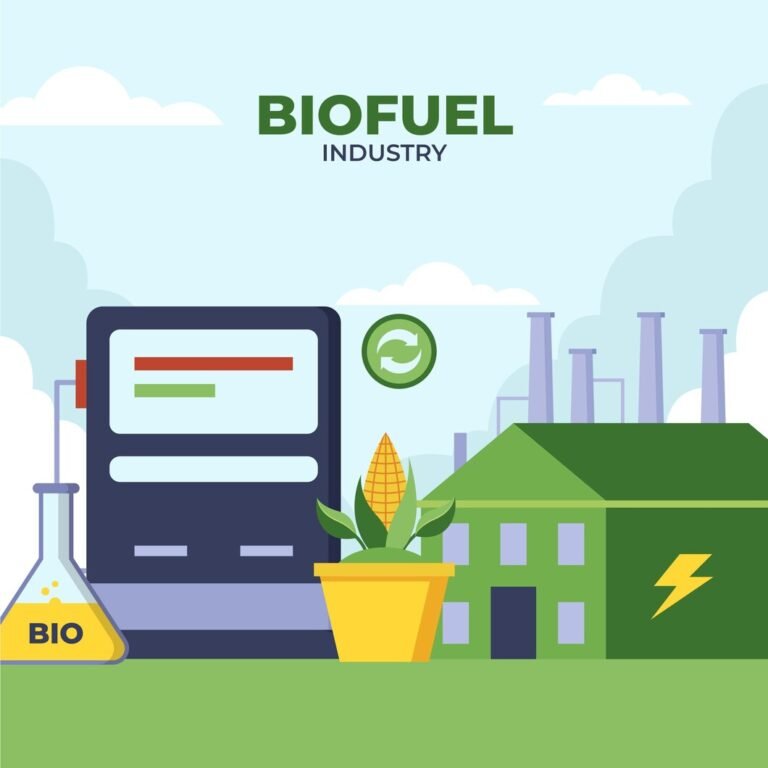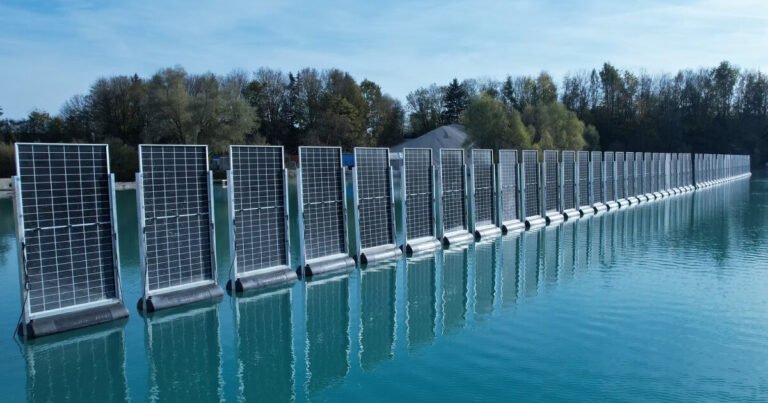Offshore Wind Could Host Large-Scale Seaweed Farms and Capture Carbon Fast
Offshore wind farms and seaweed may seem like different solutions to climate change, but in the last two years, the idea of growing seaweed inside or alongside wind parks has moved from theory into real-world projects. Co-locating seaweed with turbines saves space, reduces conflicts over ocean use, and—critically—creates opportunities to capture carbon while producing food and other materials. According to Plymouth Marine Laboratory, the world’s first commercial-scale seaweed farm, placed inside an existing North Sea wind farm, began full operations in 2024, proving the concept at an industrial scale.
Why is this catching on now? Two reasons. First, offshore wind is expanding quickly, so the marine footprint already licensed and monitored for turbines can host other activities without taking up more sea area. Second, new science is strengthening the case that seaweed aquaculture can do more than feed people—it can lock carbon away. A 2025 global study published in Nature Climate Change found measurable carbon burial beneath working seaweed farms—rates that in many cases are comparable with recognised “blue carbon” habitats like seagrass and mangroves. According to the study, those sediment burial numbers are real and measurable.

In This Article
- How Seaweed Captures Carbon — and What Science Says
- Projects, People, and Markets Driving Offshore Seaweed Farming
- What Must Be Done Next — Policy, Markets and Practical Steps
- Conclusion
How Seaweed Captures Carbon — and What Science Says
Seaweeds photosynthesise like land plants: they take up CO₂ and turn it into biomass. But the climate-relevant question is not just how they grow—it’s what happens to the carbon after harvest or when parts of the plant break off. Some fraction becomes dissolved organic matter or detritus that settles into seabed sediments or is transported to deep-ocean sinks. Where conditions favour deposition, long-term burial can occur.
The 2025 global study reported average organic carbon burial rates in sediments beneath seaweed farms of about 1.87 ± 0.73 tCO₂e ha⁻¹ yr⁻¹, with the portion directly attributable to the farms averaging roughly 1.06 ± 0.74 tCO₂e ha⁻¹ yr⁻¹. The authors note that these figures place farm-related burial toward the lower end of established blue-carbon habitats, but that rates tend to rise as farms age.
That study is a turning point because it moves seaweed beyond hopeful modelling into measured field values. However, the science also highlights important limitations. Not every farm will bury carbon: burial is a function of local currents, seabed type, farm design, and longevity, as well as whether harvested biomass is used in ways that keep carbon out of the atmosphere (for example, by turning it into long-life products rather than combusting it).
Several reviews and scoping studies emphasise that co-location with offshore wind can reduce logistical hurdles and support scale-up, but they warn of environmental trade-offs and social questions that need careful planning. A quick scoping review in Frontiers in Marine Science summarised the promise and the constraints of upscaling seaweed through co-location with wind.
A balanced reading of the literature shows two practical realities. First, seaweed can contribute to climate mitigation under the right physical and market conditions; second, it is not a simple “silver bullet.” Carbon accounting for seaweed must be rigorous: how much carbon is buried, how long it remains sequestered, and whether the economics of seaweed products support continued, well-managed farming.
Projects, People, and Markets Driving Offshore Seaweed Farming
The emerging projects combine pilots, industry collaborations, and community farms that show how the idea works in practice. In the Dutch North Sea, an initiative named North Sea Farm 1 planted young seaweed between turbines in late 2024 and has been used as the first commercial demonstration of co-located farming. According to Plymouth Marine Laboratory, this farm proved that engineers could deploy seeded substrate and manage harvesting inside a working wind park.
In Denmark, energy company Vattenfall has been piloting seaweed in the Vesterhav Syd wind farm to produce food-grade seaweed at scale while testing logistics and supply chains. According to Vattenfall, these pilots are intended to show how wind operators and seaweed growers can cooperate on maintenance, safety, and product traceability.
Closer to shore, community and mixed-use farms demonstrate different benefits. According to The Guardian, in Maine, USA, Bangs Island Mussels co-cultivates mussels together with kelp. The farm’s manager and local shellfish growers report better shell growth and local reductions in acidity where kelp is dense—practical, immediate benefits for livelihoods as well as environmental services.
These projects also surface business questions. Large investors and NGOs are testing whether carbon credits, food markets, or bioproduct value chains will pay for long-term farming and monitoring. Reports from conservation organisations and market assessments suggest that seaweed markets are growing fast—estimates put global seaweed aquaculture value in the tens of billions and growing at around 7–9% yearly—yet carbon crediting for seaweed remains complex and is not yet a turnkey finance mechanism for most operators. A market analysis in Nature.org reported seaweed aquaculture growth and flagged challenges for carbon-crediting schemes.
Here is a concise snapshot of key numbers from the recent literature and industry reports:
| Metric | Typical value (range) |
|---|---|
| Average organic-carbon burial rate in farm sediments | 1.87 ± 0.73 tCO₂e ha⁻¹ yr⁻¹ |
| Excess burial attributable to farms | 1.06 ± 0.74 tCO₂e ha⁻¹ yr⁻¹ |
| Oldest farm measured sediment stock | up to ~140 tC ha⁻¹ (in oldest farm) |
| Global seaweed market growth | ~7–9% annual growth; market tens of billions USD |
| First commercial co-located farm launched | 2024 — North Sea Farm 1 (Hollandse Kust Zuid) |
These numbers are not a guarantee of carbon removal at the global scale; they are measured indications that, where farm design, environment and markets align, seaweed can add genuine climate value.

What Must Be Done Next — Policy, Markets and Practical Steps
If seaweed-plus-wind is to move from interesting pilots to a reliable climate tool and a source of sustainable jobs, three practical priorities stand out.
First: rigorous monitoring and transparent accounting. Any claim about carbon removal needs field monitoring of where organic carbon goes, how long it stays put, and the baseline against which burial is measured. The Nature Climate Change paper used sediment cores at multiple farms to build an evidence base—this is the right direction. National policymakers and funders should require standardised monitoring protocols as a condition of credits or subsidies.
Second: sensible co-planning and regulation for multi-use ocean space. Offshore wind leases already come with navigational safety, inspection routines, and maintenance access—those systems can be adapted to host seaweed lines and harvest windows. However, regulators must set clear rules on species choice, gear types, and biosecurity, and ensure local fishers and coastal communities have a voice. Roadmaps developed by Dutch multi-use initiatives show how to sequence pilots, share data and align responsibilities between energy companies and aquaculture operators.
Third: build markets that value the multiple benefits. Seaweed grown near wind farms can feed people, support feed and fertiliser markets, and—if monitoring can certify it—earn climate value. But for farmers to invest in long-lived practices, buyers and investors need long-term contracts or credible carbon payment mechanisms. Conservation groups and market analysts warn carbon credits alone are unlikely to fund all the costs; blended finance—combining food sales, product premiums, and public support—looks more realistic in the near term.
Finally, listen to the people who work the water. The practical lessons from family farms and small co-ops are simple and hard-won: kelp and mussel combinations can improve yields for shellfish; local knowledge speeds deployment and reduces gear losses; flexible harvest schedules avoid interference with turbine maintenance. These human details matter for whether co-location is an opportunity or a headache for coastal communities. The Guardian’s reporting from Maine shows how local farmers are already realising those co-benefits.
Actionable advice for policymakers and practitioners
- Fund standardised, multi-site monitoring programs now. Use sediment cores, water-column measurements and life-cycle analysis to track where carbon goes and for how long.
- Pilot co-location under clear regulatory pilots with community involvement. Start with zones near ports with established aquaculture supply chains; require data-sharing agreements and adaptive management.
- Design finance that mixes value streams: food, materials, and verified carbon services. Don’t rely only on nascent carbon markets.
- Prioritise ecosystem safeguards: avoid non-native species, monitor nutrient effects, and plan for cumulative impacts as more farms scale up. Reviews warn that poor planning creates risks—do this before a massive scale-up.
- Share stories and practical wins. Local pioneers—from Bangs Island Mussels in Maine to North Sea Farm 1 in the Netherlands—provide the operational know-how others need to copy and adapt.
Conclusion
Co-locating seaweed and offshore wind is not a pipe dream. It is a practical, testable approach that already has tuned pilots, hard-won local lessons, and new field science showing real carbon burial beneath farms. The road ahead is technical and political: solid monitoring, smart regulation, and realistic markets will decide whether these “floating gardens” become a reliable climate tool or an expensive experiment.
If governments, industry and communities act together—with clear rules, transparent data and fair finance—offshore wind installations could become more than power stations; they could be generators of food, jobs and verified climate benefits. According to multiple studies and projects documented between 2023 and 2025, the evidence and the pilots are now lining up to make that possible.







